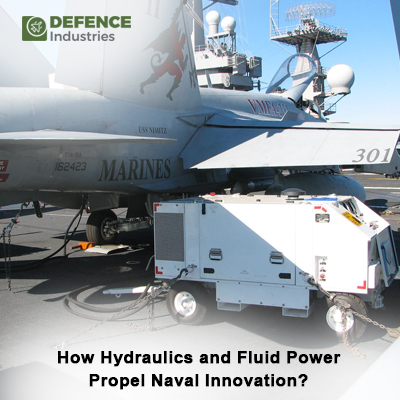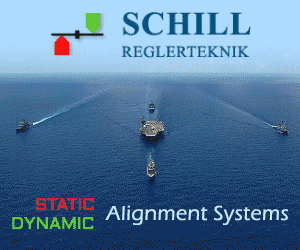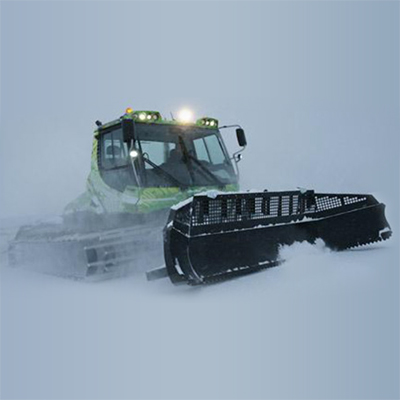How Hydraulics and Fluid Power Propel Naval Innovation?

Hydraulics and fluid power have long been at the forefront of naval innovation, driving advancements that have transformed maritime operations and capabilities. From the earliest hydraulic systems used in ancient watercraft to the sophisticated hydraulic and fluid power technologies employed in modern naval vessels, the evolution of these systems has played a crucial role in shaping the effectiveness, efficiency, and safety of naval operations. This article delves into the pivotal role of hydraulics and fluid power in propelling naval innovation, exploring their applications, benefits, challenges, and future prospects.
Historical Foundations of Hydraulic Systems in Naval Operations
The utilization of hydraulic systems in maritime settings traces back to ancient times when simple hydraulic principles were employed in watercraft for steering and propulsion. Ancient civilizations such as the Greeks and Romans utilized basic hydraulic mechanisms to manipulate water flow for various purposes, laying the groundwork for future innovations in naval technology. Over time, as maritime exploration and warfare evolved, so did the complexity and sophistication of hydraulic systems in naval vessels.
Key Applications of Hydraulics and Fluid Power in Modern Naval Vessels
In modern naval vessels, hydraulics and fluid power play multifaceted roles across various systems and components. One of the primary applications is in ship steering and control mechanisms, where hydraulic systems enable precise and responsive maneuvering, critical for navigating complex maritime environments and executing tactical maneuvers. Hydraulic systems also power essential functions such as crane operations for cargo handling, anchor deployment and retrieval, and weapon systems positioning on naval platforms.
Moreover, hydraulics and fluid power are integral to the operation of shipboard machinery and equipment, including propulsion systems, deck machinery, and auxiliary systems. Hydraulic propulsion systems, such as waterjets and azimuth thrusters, provide propulsion efficiency, agility, and maneuverability, contributing significantly to the overall performance of modern naval vessels. Additionally, hydraulic systems support the operation of flight deck equipment on aircraft carriers, facilitating aircraft launch and recovery operations with precision and reliability.
Benefits of Hydraulic and Fluid Power Systems in Naval Operations
The adoption of hydraulic and fluid power systems in naval operations offers several key benefits that enhance operational capabilities and mission effectiveness. One of the primary advantages is the high power-to-weight ratio of hydraulic systems, enabling the generation of significant forces and torque with compact and lightweight components. This characteristic is particularly advantageous in naval applications where space and weight constraints are critical considerations.
Furthermore, hydraulic systems provide rapid and precise response capabilities, essential for dynamic naval environments where quick adjustments and precise control are paramount. The ability to transmit power efficiently over long distances without significant loss also makes hydraulics ideal for powering remote or distributed systems on naval vessels. Additionally, hydraulic systems are known for their durability, reliability, and resilience in harsh marine conditions, ensuring consistent performance even in challenging operational environments.
Challenges and Limitations in Hydraulic and Fluid Power Technologies
Despite their numerous benefits, hydraulic and fluid power technologies also face challenges and limitations in the context of naval applications. One of the primary challenges is the potential for hydraulic fluid leaks, which can compromise system performance, safety, and environmental sustainability. Efforts to mitigate leakage risks through advanced sealing technologies, fluid monitoring systems, and preventive maintenance protocols are ongoing areas of focus in naval hydraulic engineering.
Another challenge is the energy efficiency of hydraulic systems, particularly in comparison to emerging electric and hybrid propulsion technologies. While hydraulic systems excel in power density and instantaneous response, optimizing energy efficiency to minimize fuel consumption and environmental impact remains a priority for naval engineers and researchers. Additionally, the complexity of hydraulic systems necessitates comprehensive training, maintenance, and troubleshooting protocols to ensure reliable and safe operation throughout the lifecycle of naval vessels.
Innovations Driving Future Advances in Hydraulic and Fluid Power
The future of hydraulics and fluid power in naval innovation is characterized by ongoing advancements and innovations aimed at addressing current challenges and enhancing performance capabilities. One notable trend is the integration of smart technologies, sensors, and automation into hydraulic systems, enabling real-time monitoring, predictive maintenance, and adaptive control functionalities. These innovations not only improve system reliability and efficiency but also contribute to enhanced safety and sustainability in naval operations.
Furthermore, research and development efforts are focused on developing environmentally friendly hydraulic fluids, bio-based materials, and sustainable hydraulic system designs to minimize environmental impact and align with evolving regulatory requirements. The integration of energy recovery systems and hybrid power architectures is also gaining traction, offering opportunities to improve overall energy efficiency and reduce lifecycle costs associated with hydraulic systems in naval applications.
Conclusion
Hydraulics and fluid power continue to play a pivotal role in driving naval innovation, enabling enhanced maneuverability, operational capabilities, and mission readiness in modern naval vessels. From steering and control systems to propulsion and deck machinery, hydraulic technologies contribute significantly to the efficiency, reliability, and safety of maritime operations. While facing challenges such as fluid leakage and energy efficiency, ongoing advancements and innovations are poised to further strengthen the role of hydraulics and fluid power in shaping the future of naval technology, ensuring continued excellence in maritime defence and exploration.









